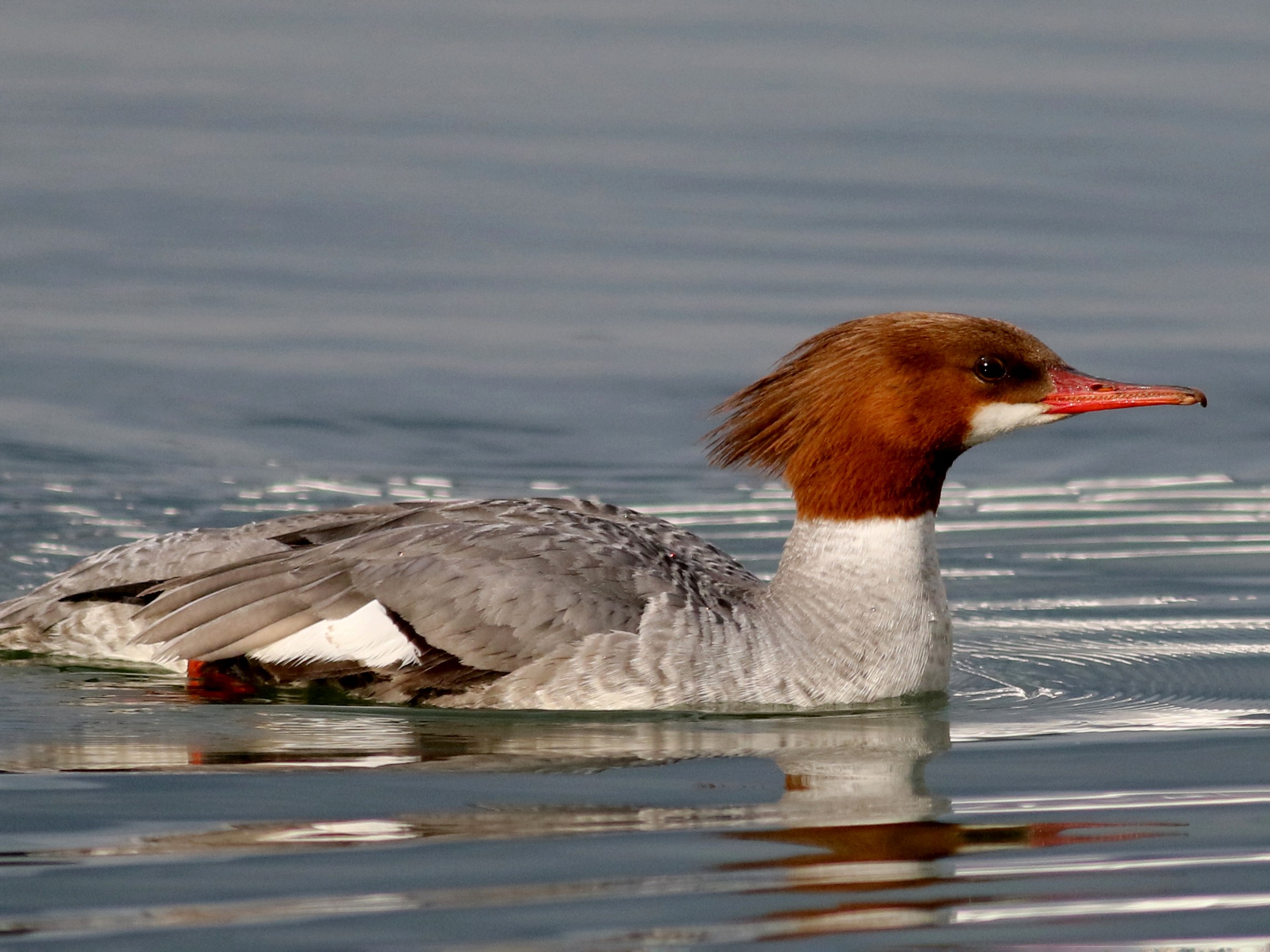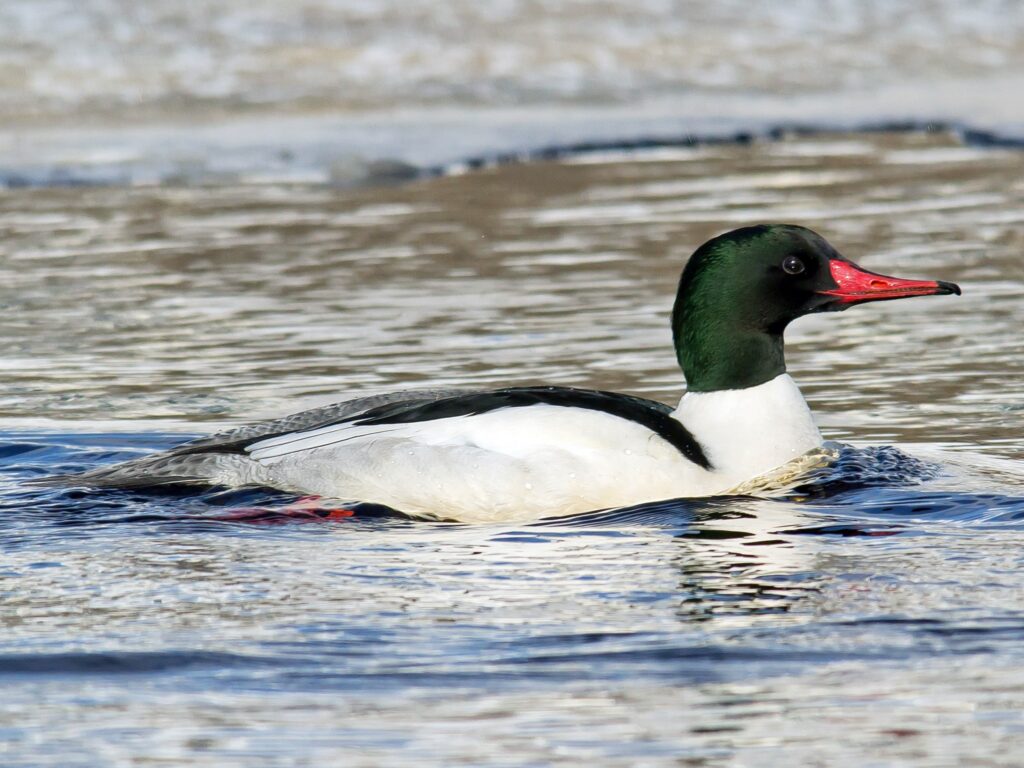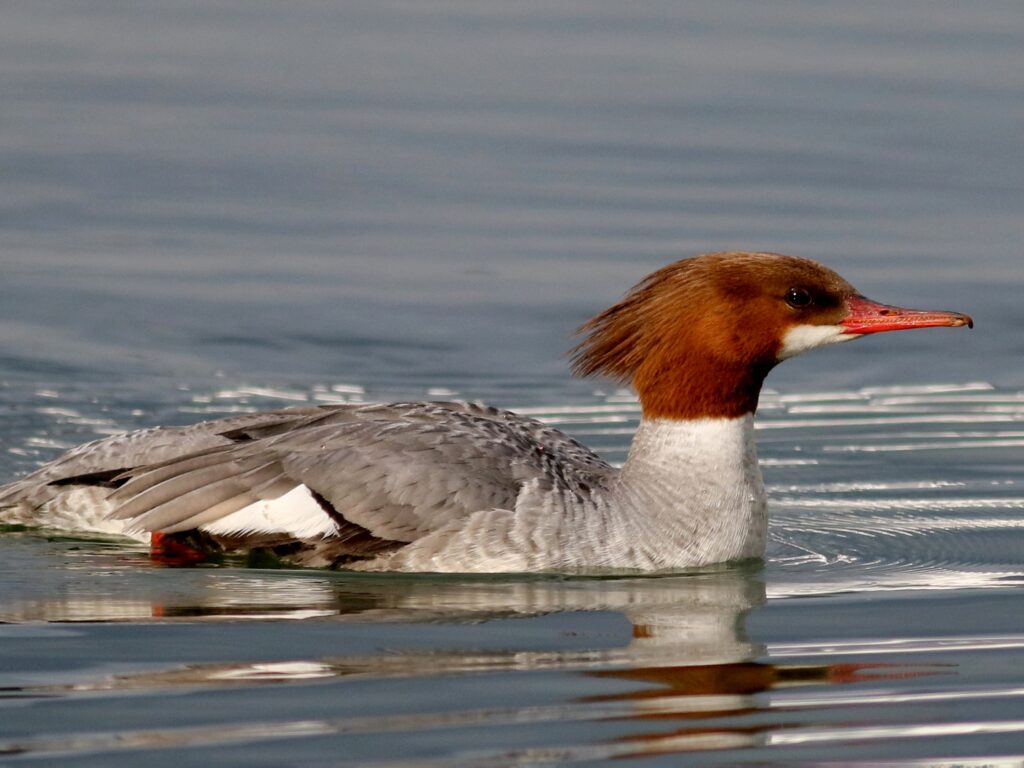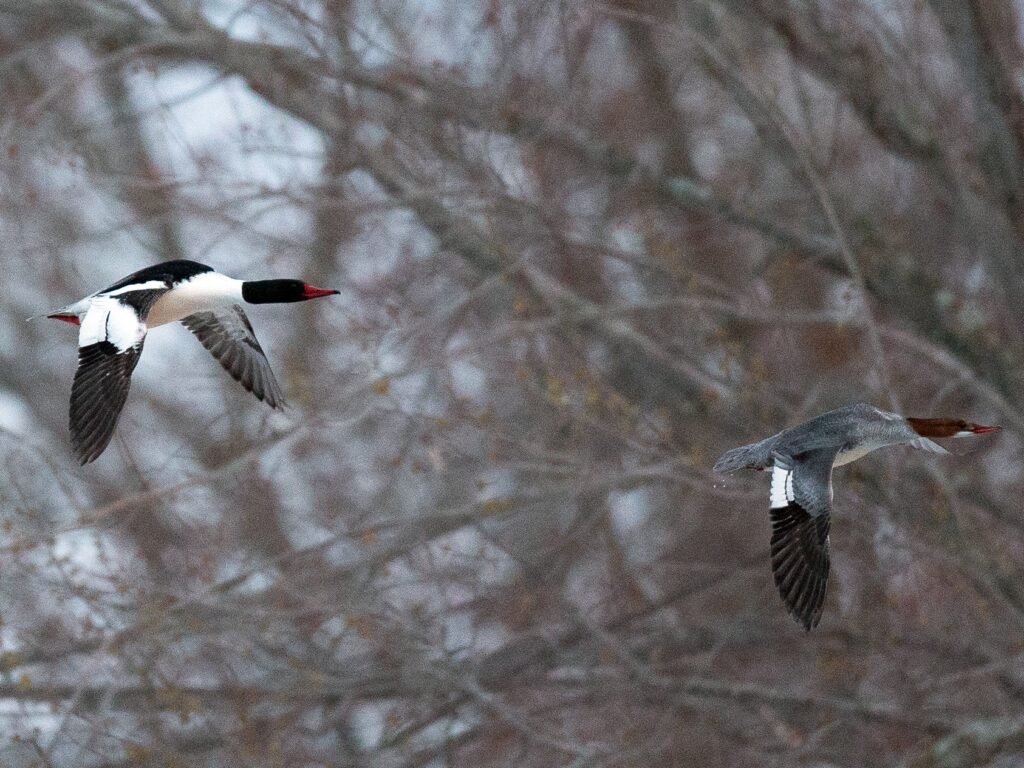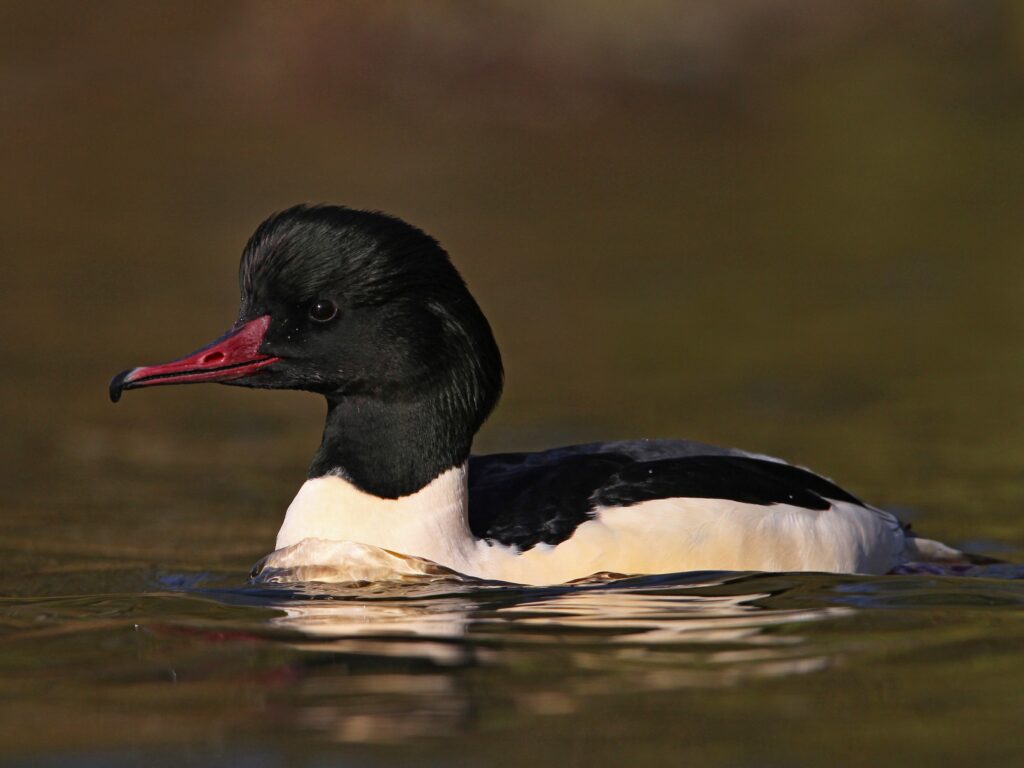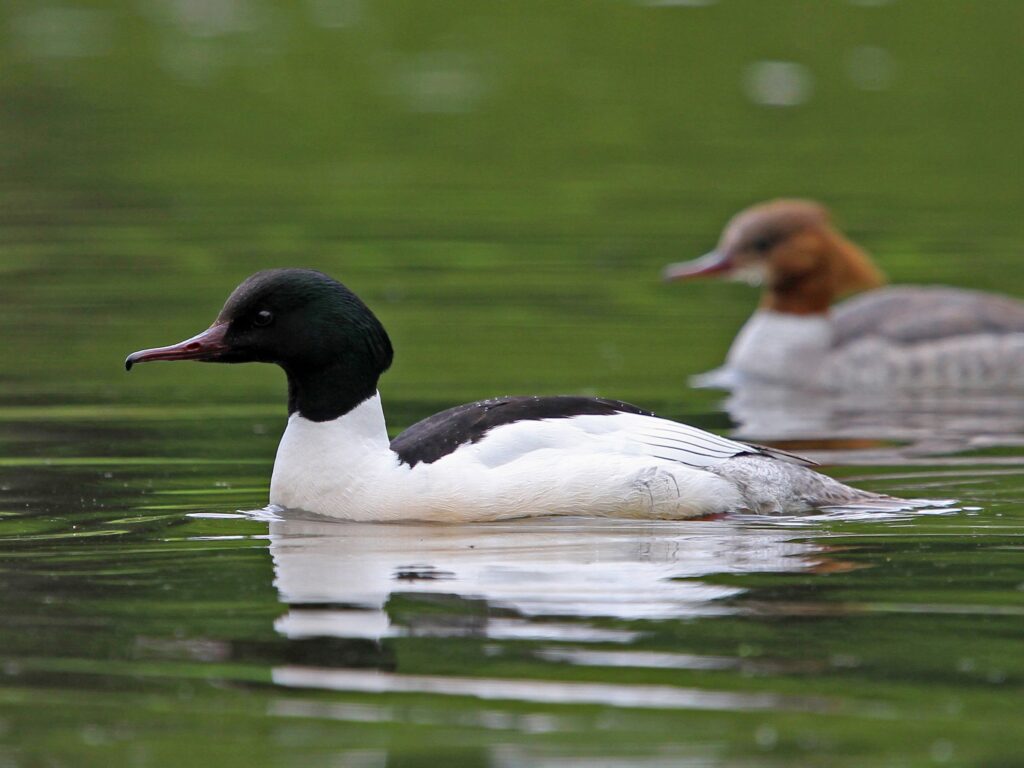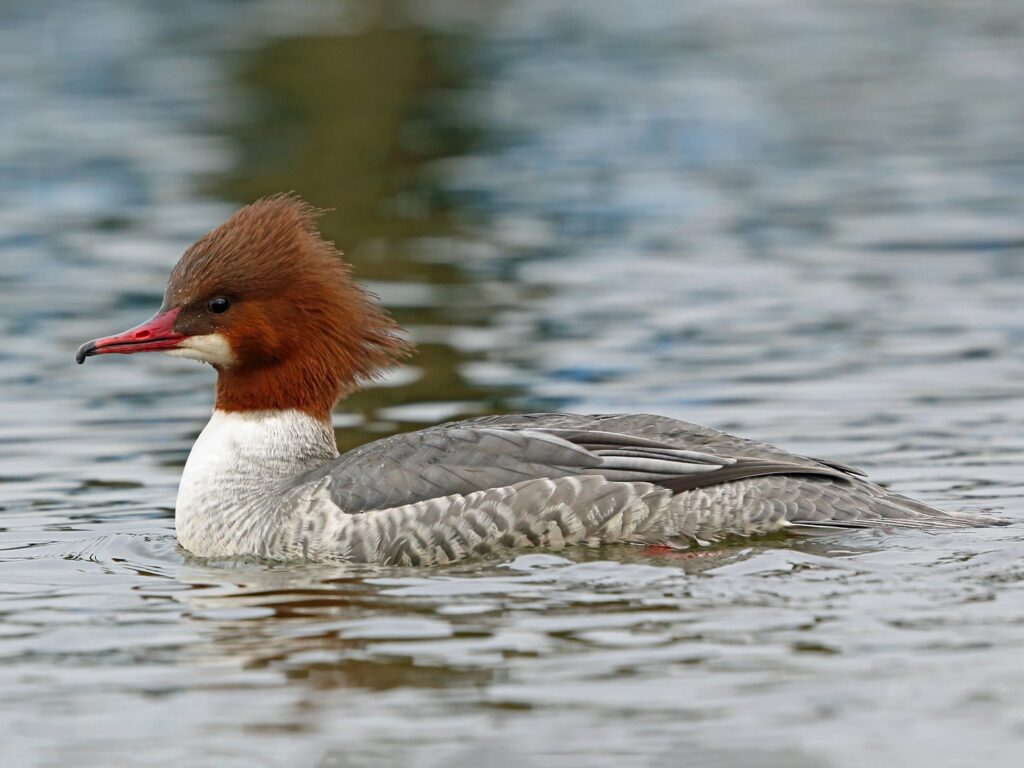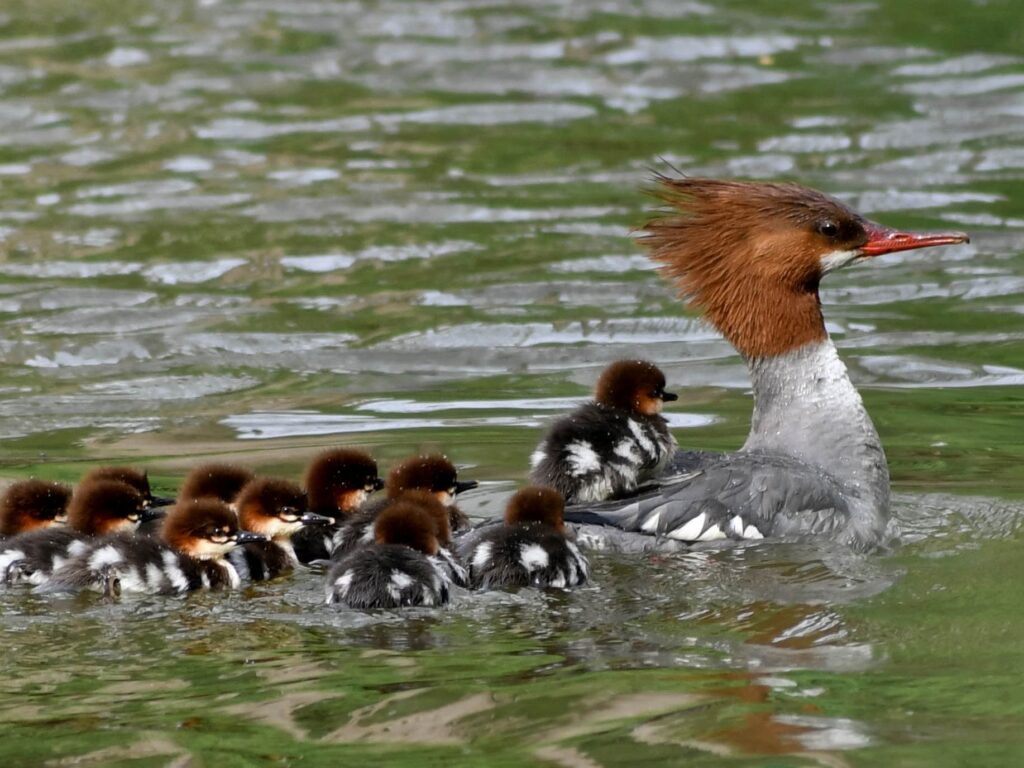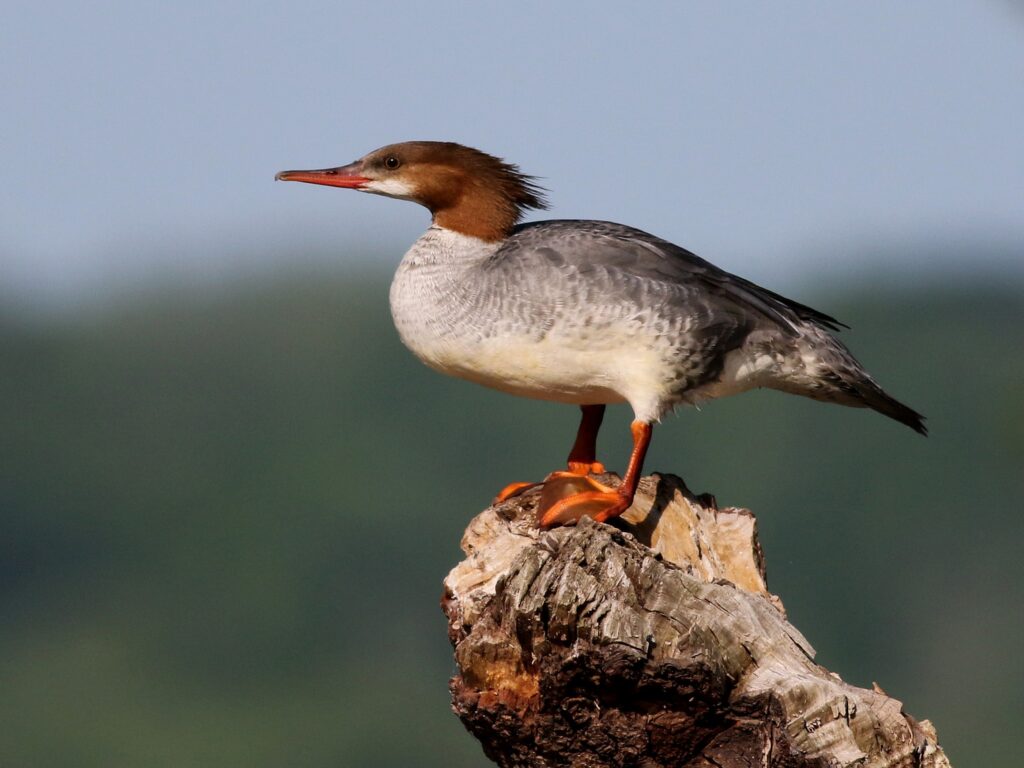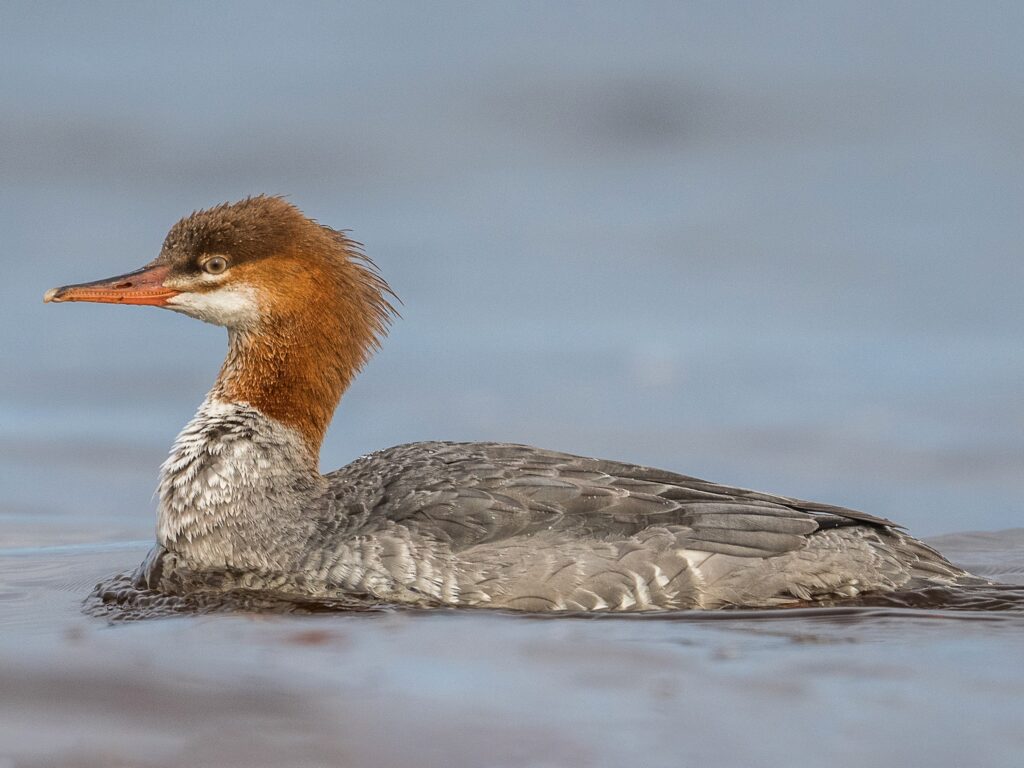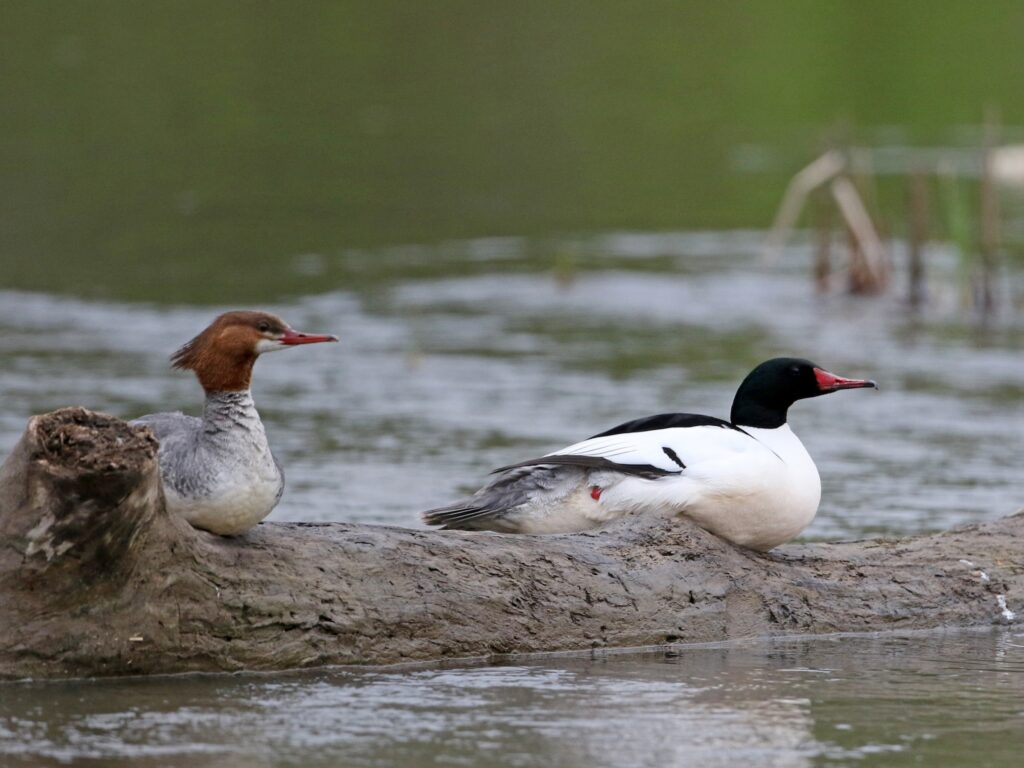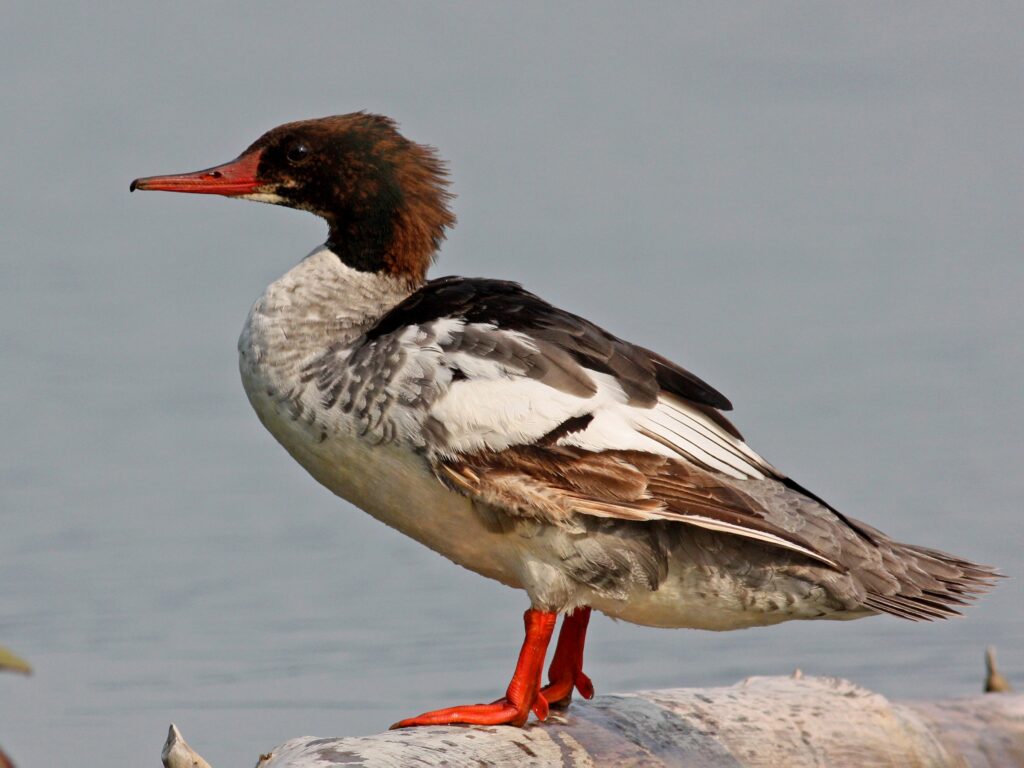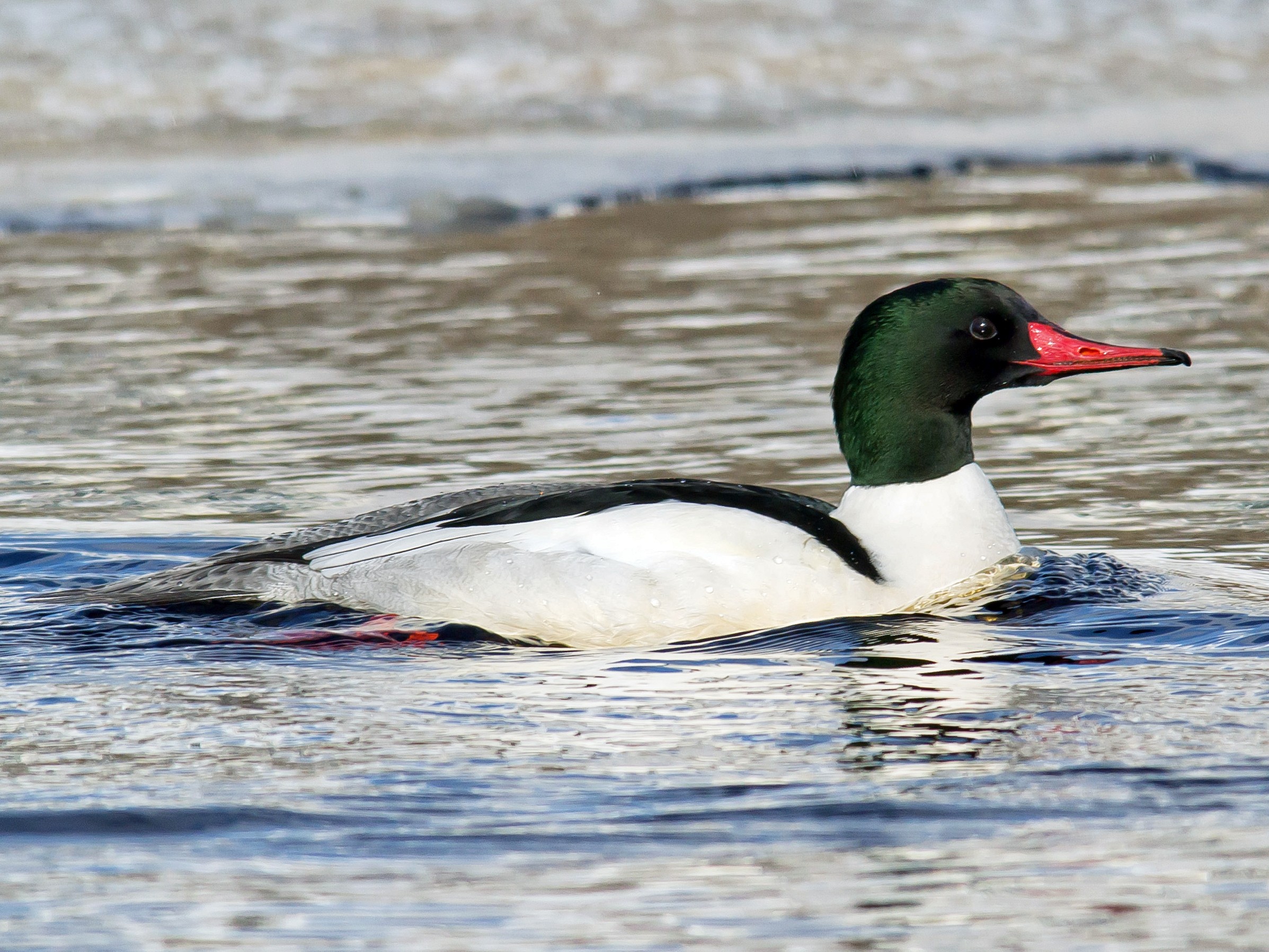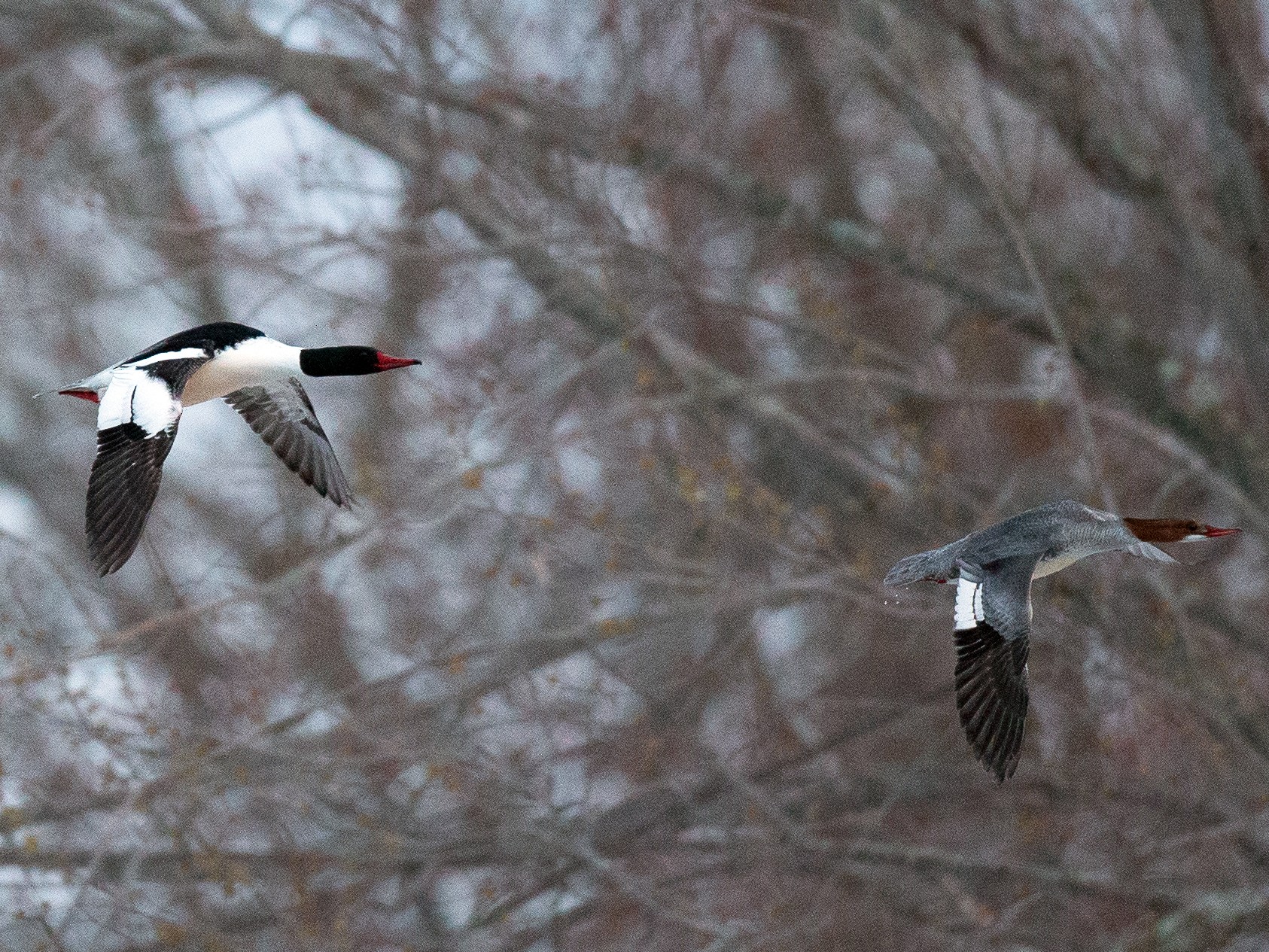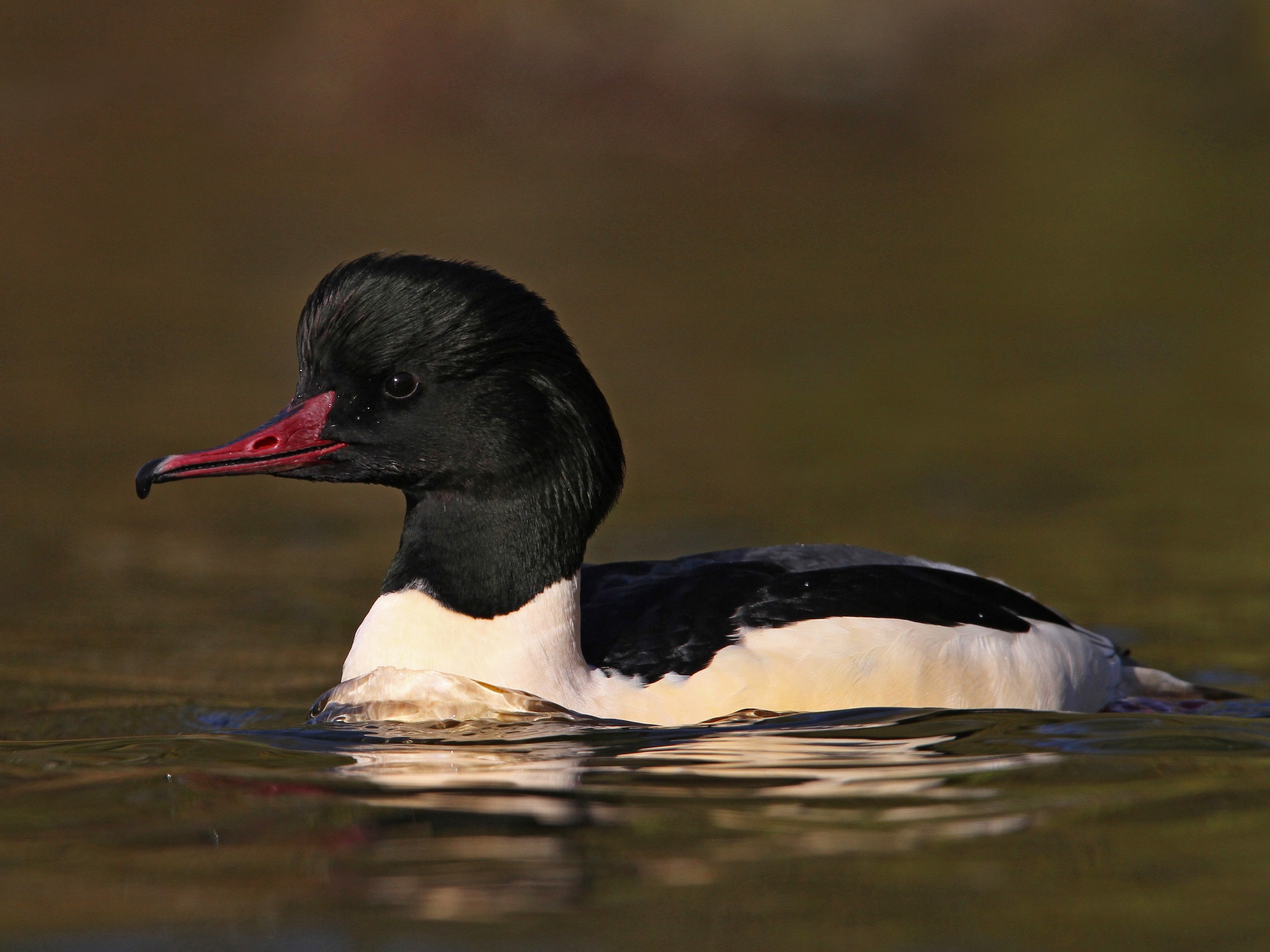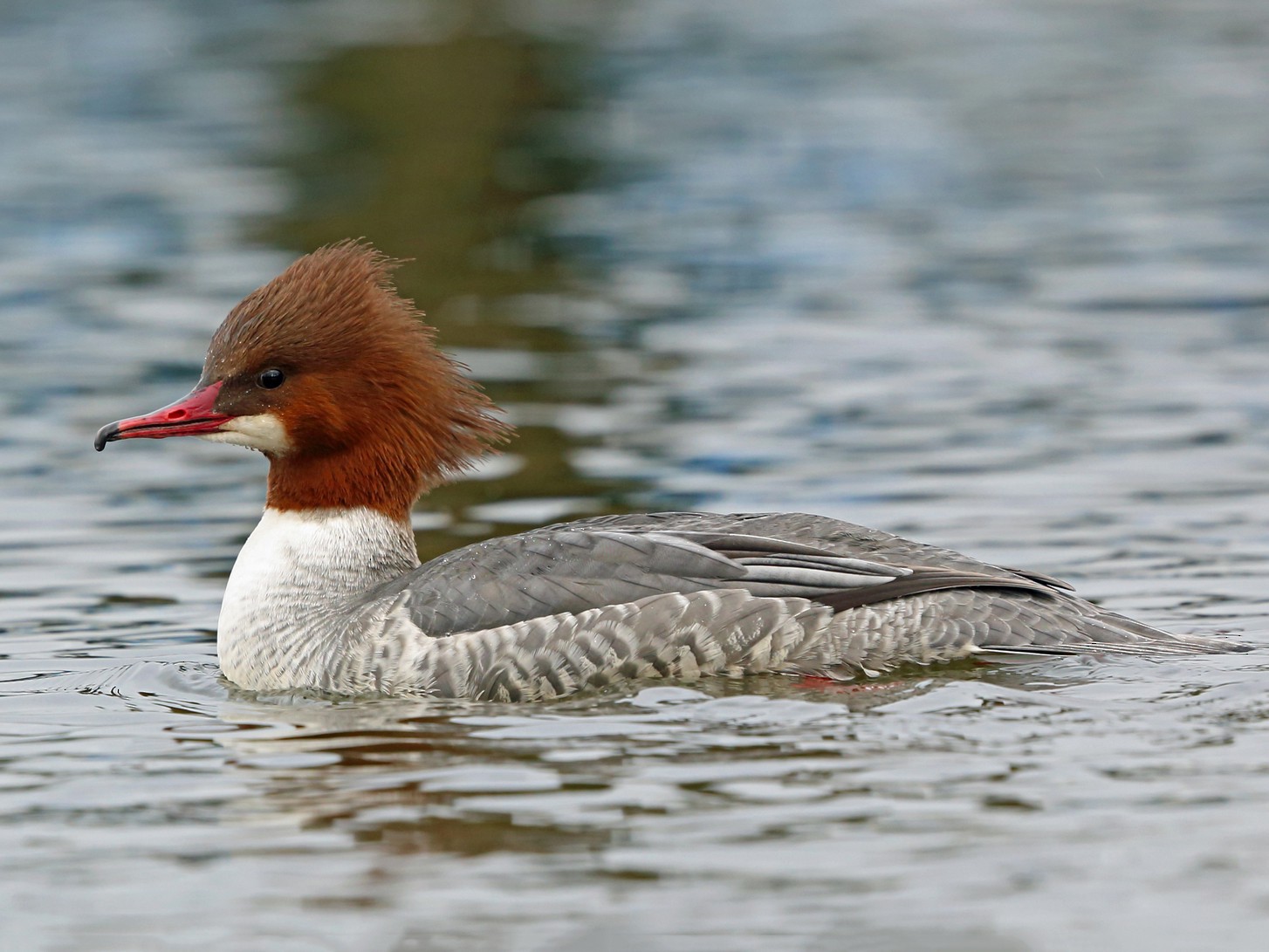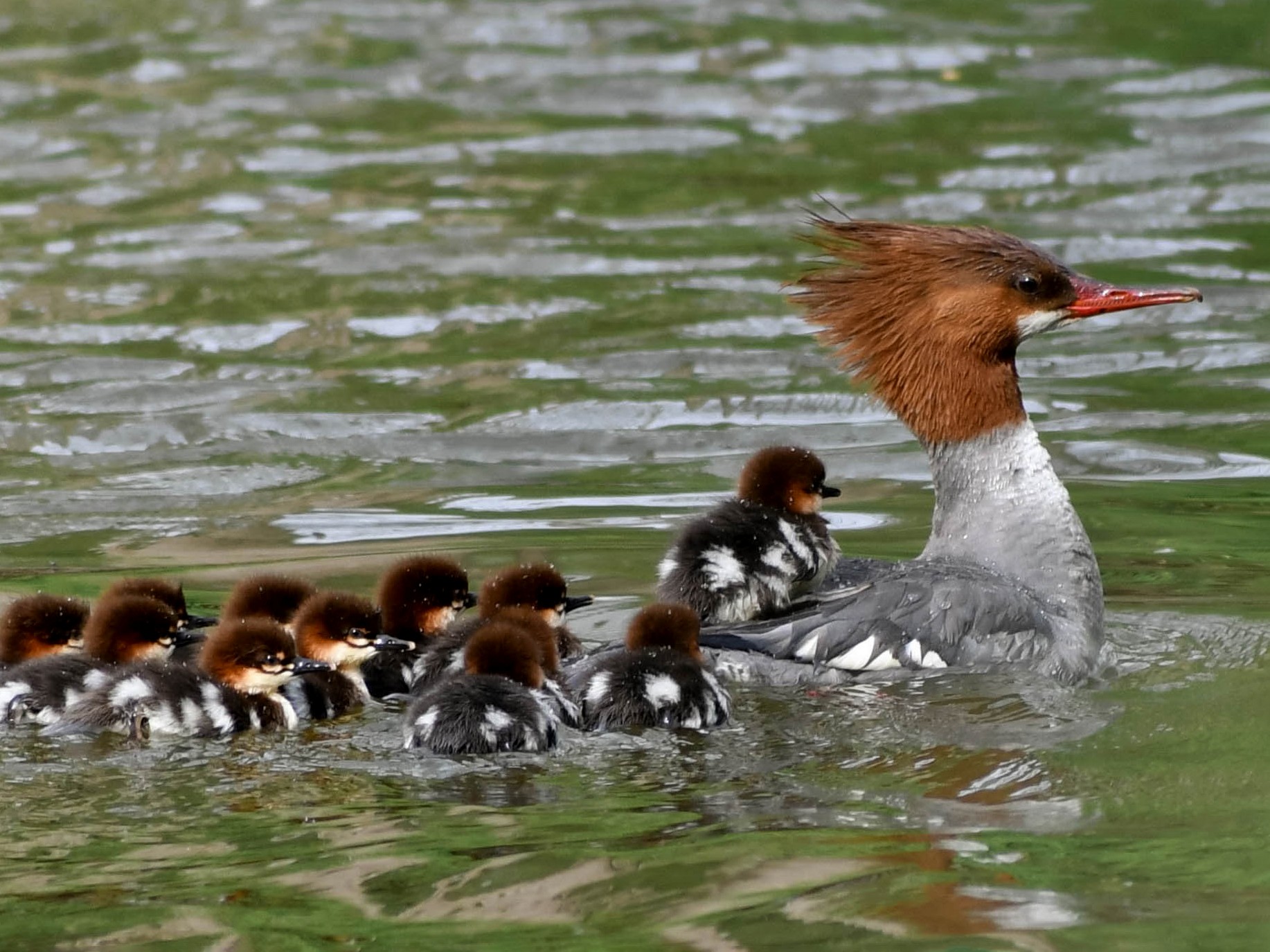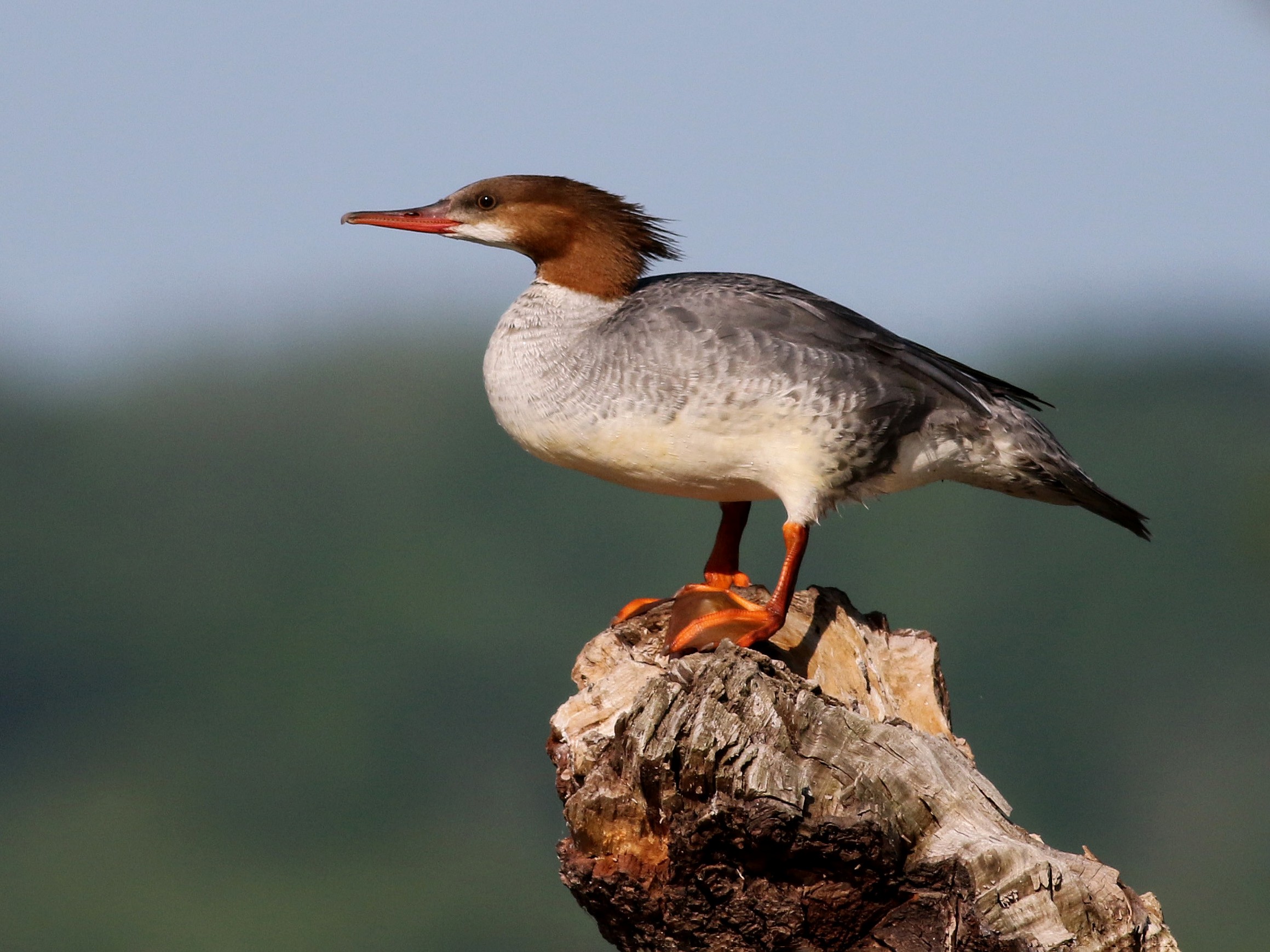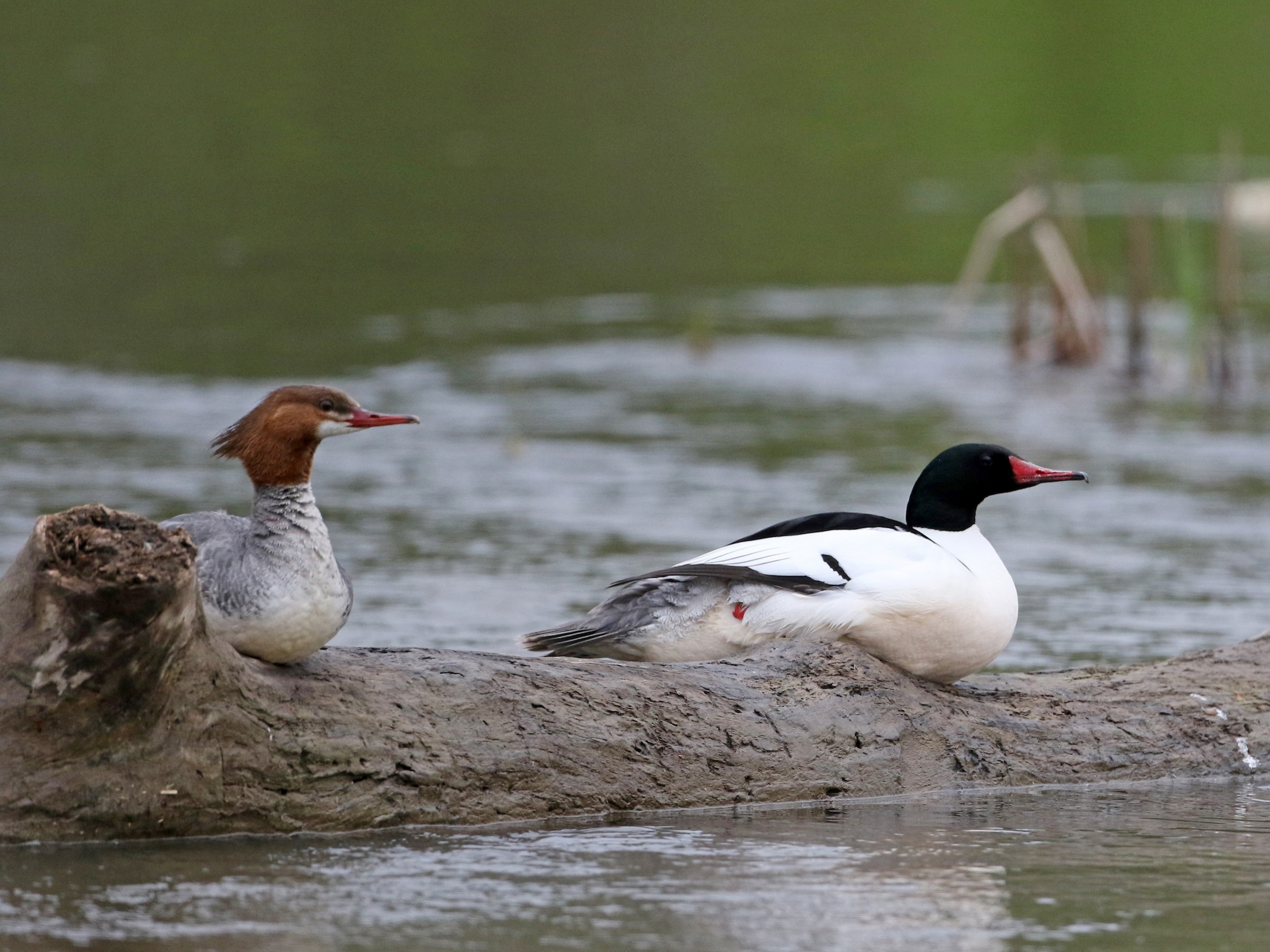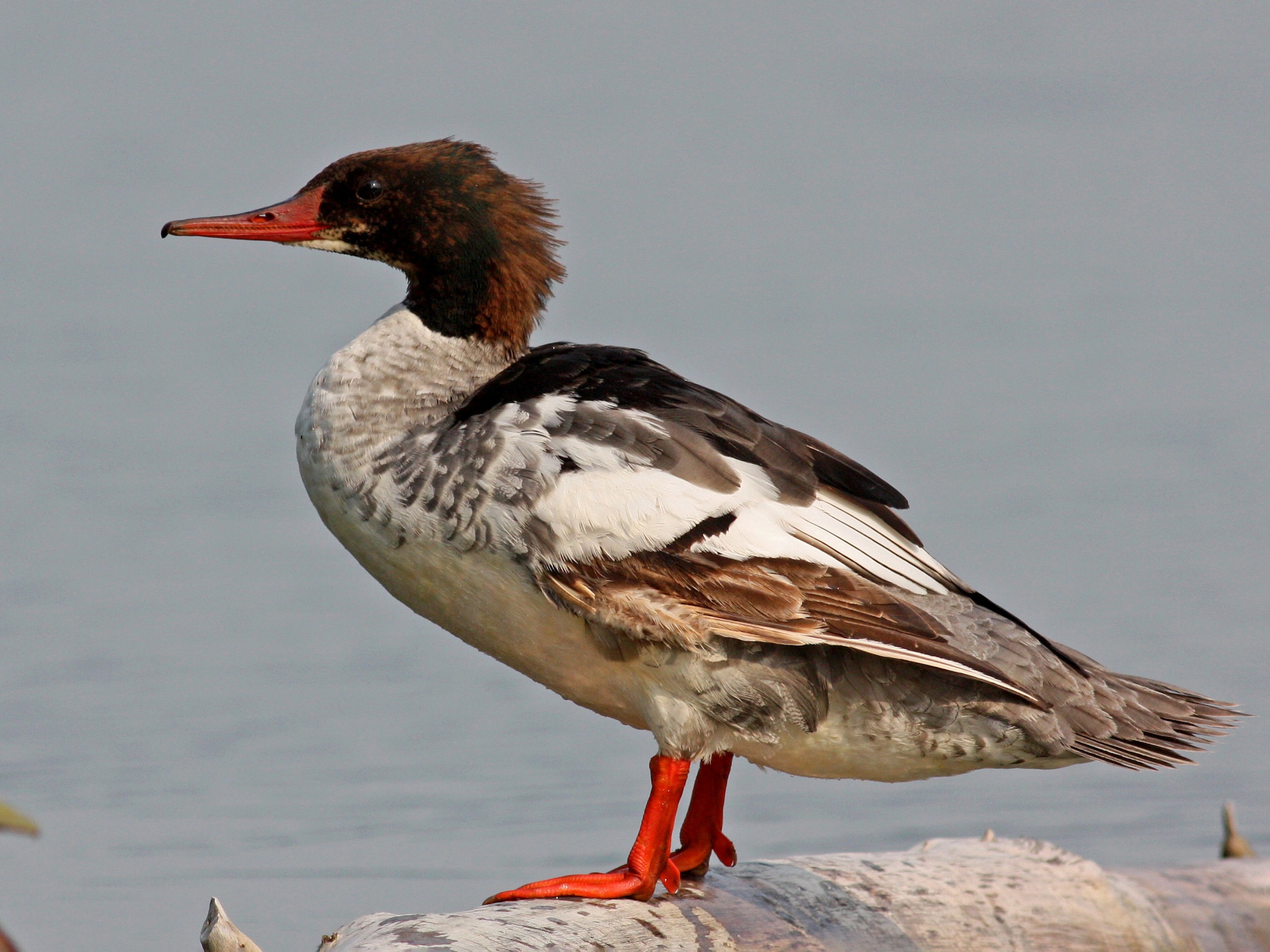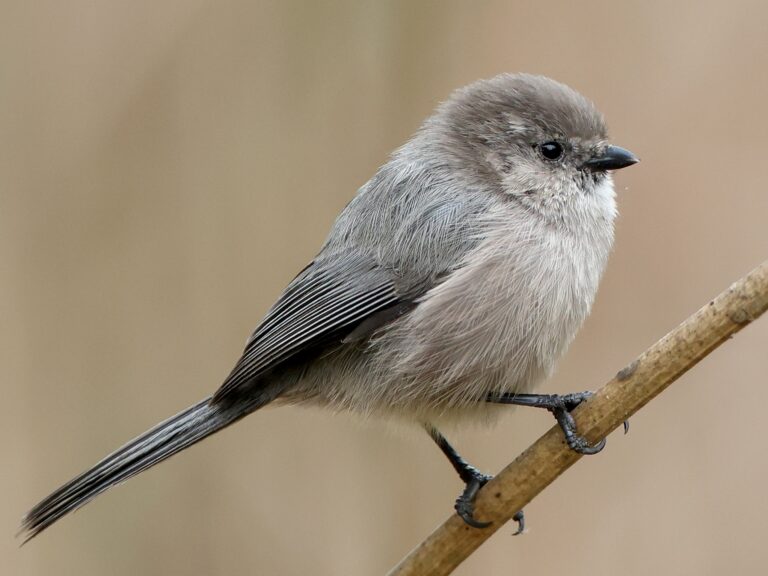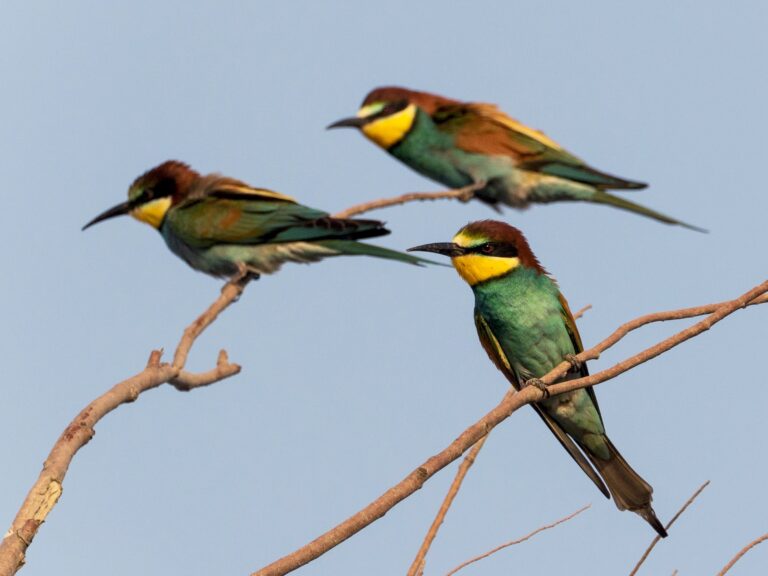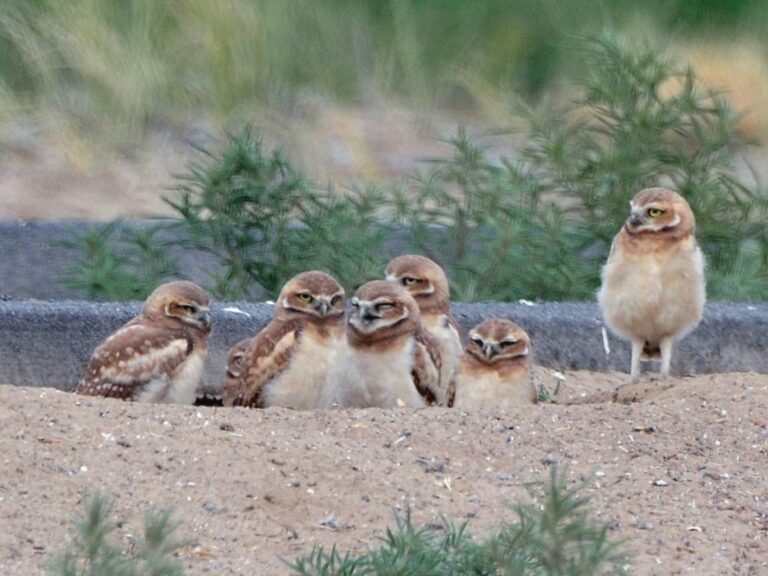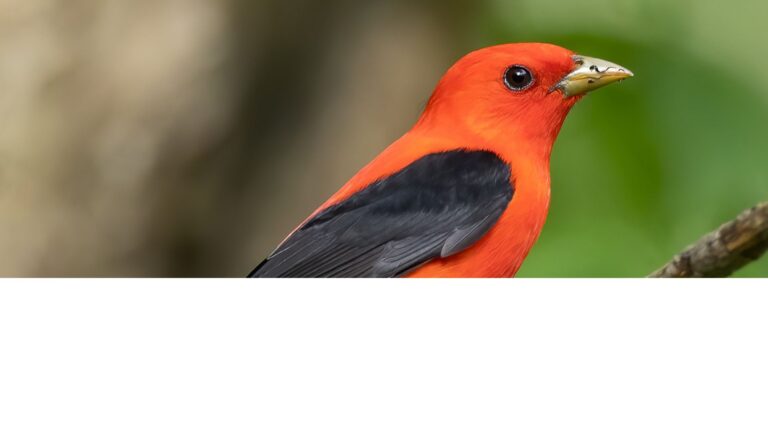Common Merganser: The Streamlined Diver of North America
The Common Merganser is a striking waterfowl known for its sleek body and distinctive appearance. This species can be recognized by its sharp bill and striking green head, making it a favorite among birdwatchers. They are skilled hunters, often diving underwater to catch fish, which forms a major part of their diet. Observing these birds in their natural habitats adds excitement to any nature outing.
Common Mergansers prefer freshwater lakes and rivers, where they can find plenty of food. Their breeding range stretches across North America and parts of Europe, showcasing their adaptability to different environments. As migratory birds, they travel long distances, which puts them at risk due to habitat loss and environmental changes.
Understanding the behaviors and challenges faced by the Common Merganser can enhance our appreciation for these remarkable birds. This article will explore their diet, reproduction, and the conservation efforts in place to protect them from various threats.
Key Takeaways
- Common Mergansers are known for their unique appearance, diving skills and vocalizations.
- They inhabit freshwater bodies and have a wide breeding range.
- Conservation efforts are crucial for their survival amid environmental threats.
Species Overview
The Common Merganser is a distinct species known for its unique traits and significant evolutionary background. Understanding its taxonomy, evolution, and physical characteristics provides insight into its role in avian biodiversity.
Taxonomy and Evolution
The Common Merganser (Mergus merganser) belongs to the family Anatidae, which includes ducks, swans, and other mergansers. This species is part of the genus Mergus, characterized by diving ducks that primarily feed on fish.
Evolutionarily, mergansers diverged from other ducks around 20 million years ago. They inhabit freshwater lakes and rivers across North America, Europe, and Asia. Fossil evidence indicates that their ancestors were present in North America during the late Miocene epoch. Current classifications recognize roughly five species within the Mergus genus.
Physical Characteristics
Common Mergansers are large ducks with distinct features. Males have a striking appearance with greenish-black heads, white bodies, and a notable red-orange bill. Females have a more subdued coloration, often described as a brownish body with a light gray neck and a rust-colored head.
These birds exhibit a wingspan ranging from 28 to 32 inches, making them powerful fliers. Their streamlined bodies are adapted for diving, allowing them to pursue fish underwater with agility. The sharp, serrated edges of their bills enable them to grip slippery prey effectively.
Such physical traits make the Common Merganser well-suited for aquatic environments and highlight its role as a specialized predator in its ecosystem.
Habitat and Distribution
Common Mergansers occupy specific habitats that are key to their breeding and migration. Their choices greatly influence their population dynamics.
Breeding Habitats
Common Mergansers nest in various locations, primarily near freshwater bodies. They are often found in forested regions alongside rivers and lakes. These habitats provide essential resources for feeding and safety.
Nests are typically in natural cavities, like tree hollows, or in areas with abundant vegetation. Sometimes, they utilize rock crevices. The choice of a nesting site helps protect the young from predators.
Breeding pairs often prefer secluded spots away from disturbances. They thrive in cold, clear waters where fish populations are healthy. This specific habitat is crucial for raising ducklings, as they require ample food sources.
Migration Patterns
Common Mergansers migrate between breeding and wintering grounds. Their migrations can vary based on regional climate and food availability. Generally, they leave breeding areas in late summer to fall.
These birds typically travel to coastal areas or lakes where temperatures are milder. Migration routes are often direct, connecting breeding sites and winter habitats.
During migration, Common Mergansers can be spotted in mixed flocks with other waterfowl, including loons. These joint movements help them find safety and resources. Their adaptability enables them to thrive in different environments throughout the year.
Diet and Foraging
The Common Merganser is known for its specific feeding patterns and varied diet. Understanding its feeding behavior and diet composition offers insight into how this species survives in its environment.
Feeding Behavior
The Common Merganser employs a mix of diving and surface foraging techniques. They dive to catch fish, using their slender bodies to swiftly navigate underwater. These ducks often hunt in groups, which can increase foraging success.
Common Mergansers also adjust their foraging locations based on the availability of prey. They prefer habitats where fish are abundant. Sizes of flocks can influence the foraging strategy as larger groups may successfully chase fish into concentrated areas.
Diet Composition
The diet of the Common Merganser primarily consists of fish, but they may also consume various invertebrates and occasionally plant matter. Key fish species in their diet include:
- Trout
- Salmon
- Perch
Studies show that they can be opportunistic feeders, adjusting their diet based on seasonal availability of prey. During fall, they often target forage fish like herring.
Research indicates that the diet of the Common Merganser may vary by location, reflecting local fish populations. This adaptability plays a vital role in their success as a predator in aquatic ecosystems.
Reproduction and Lifecycle
Mergansers have specific mating habits and parental care practices that play an important role in their lifecycle. These aspects are crucial for the survival and development of their young.
Mating Habits
Mergansers typically mate in late winter or early spring. During courtship, males display their bright plumage and perform various rituals to attract females. They may also engage in synchronized swimming to impress potential mates.
Once a pair forms, they will seek a nesting site. Common mergansers often choose secluded locations, such as tree cavities or rock crevices, to protect their eggs and goslings from predators. The female usually lays between 5 to 12 eggs, which she incubates for about 28 days before they hatch.
Parental Care and Development
After the eggs hatch, the mother leads the ducklings to water within a day. The ducklings are precocial, meaning they are capable of swimming and foraging almost immediately. The mother stays close, offering protection and guidance.
During the early weeks, the female provides warmth and security. Ducklings feed on aquatic insects and small fish, which help them grow and develop strong bodies. The young mergansers typically fledge in about 2 to 3 months, becoming independent and ready to face the world.
Conservation and Threats
The Common Merganser, along with related species like the Hooded Merganser and Red-Breasted Merganser, faces several conservation challenges. These threats can impact their populations and habitats.
Habitat Loss:
Wetlands and riverbanks are crucial for these mergansers. Urban development and agriculture often reduce these habitats.
Pollution:
Contaminants from industrial and agricultural sources can pollute waterways. This pollution affects the fish they rely on for food.
Climate Change:
Changing weather patterns impact breeding and foraging conditions. Warmer temperatures can alter the availability of habitats.
Invasive Species:
Non-native species can compete for resources with the Common Merganser. This competition can lead to lower survival rates.
Hunting Pressure:
In some areas, hunting poses a threat to merganser populations. Regulations are necessary to ensure sustainable hunting practices.
Conservation Efforts:
Organizations work to protect wetland habitats and promote sustainable practices. Conservation plans often include monitoring populations of the Common Merganser and its relatives.
Collaboration among government bodies, conservation groups, and local communities is essential. By working together, they can develop effective strategies to enhance the survival of these species.
Interactions with Other Species
Common Mergansers engage in various interactions with other species that affect their survival and behavior. These interactions can be competitive, involving other birds or predators, or they can involve more subtle relationships that benefit multiple species.
Competitors and Predators
Common Mergansers face competition from several species for food and nesting sites. Coho salmon and trout are common prey for mergansers, making them competitors with other fish-eating birds. Species like Loons also hunt in similar habitats and may compete directly for the same fish.
In addition to competition, mergansers have to avoid predators. Birds like the Pileated Woodpecker and various raptors present threats during nesting. Young mergansers are particularly vulnerable. They can be preyed upon by larger birds or mammals that hunt near water.
Symbiotic Relationships
While common mergansers often engage in competition, they can also form beneficial relationships with certain species. For example, they may benefit from the hunting behaviors of larger fish-eating birds like Loons, which can drive fish into areas where mergansers are hunting.
Furthermore, mergansers play a role in their ecosystem’s health. By controlling fish populations, they help maintain balance in aquatic environments. Their presence indicates a healthy ecosystem, benefiting many other organisms, including plants and smaller fish species.
Frequently Asked Questions
This section addresses common questions about Common Mergansers, including their physical traits, habitat, development stages, feeding adaptations, breeding behaviors, and conservation status.
What are the distinguishing characteristics of male and female Common Mergansers?
Male Common Mergansers display striking green heads and white bodies with a black back. Their bill is bright red.
In contrast, females have a reddish-brown head and a more muted body color, usually grayish-white. Their bill is also red, but less vibrant than that of the males.
Where can one typically find the habitat range of Common Mergansers?
Common Mergansers are often found in freshwater lakes, rivers, and ponds.
They prefer areas with clear water and abundant fish.
Their habitat range spans across North America and parts of Eurasia, particularly during breeding season.
At what point in their development can juvenile Common Mergansers be identified?
Juvenile Common Mergansers can be identified shortly after they hatch.
At about two weeks old, they begin to show plumage similar to adult females, with grayish bodies and a distinct reddish-brown cap.
By the time they reach several weeks of age, their differences become more apparent.
What adaptations do Common Mergansers have for their feeding habits?
Common Mergansers are equipped with slender, serrated bills that help them grasp slippery fish.
Their excellent diving abilities allow them to pursue prey underwater effectively.
Additionally, they have keen eyesight, aiding in spotting fish in clear waters.
How does the breeding behavior of Common Mergansers differ from other waterfowl?
Common Mergansers typically nest in tree cavities or on riverbanks rather than on the ground.
Breeding usually occurs in small colonies, and females can lay large clutches of eggs.
The female solely takes care of the young after they hatch, which is common among many waterfowl.
What conservation status is currently assigned to the Common Merganser species?
The Common Merganser is currently listed as a species of least concern by the IUCN.
Although they face some habitat loss, their populations are stable in many regions.
Conservation efforts help maintain their habitats and promote their wellbeing.
